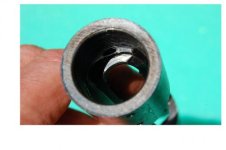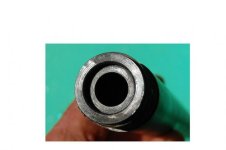ultramagmed
JKM
First off, before I get to the clearance questions. I have been working on a Remington 700. I have trued the action and sleeved the bolt, squared the bolt face, trued the lugs and abutments and was wondering if the rivet less extractors will work in the older riveted type bolts.
Now for the clearance issues.
1) Is .005 clearance enough bolt nose to counter bore end clearance?
2) Is .005 clearance (.005 each side .010 total) enough bolt nose to counter bore side clearance?
3) What clearance should I shoot for from the front of the bolt locking lugs to the barrel face?
I have logged all the dimensions from before I started this project and would like to know how tight I dare run these clearances to get the most out of my efforts. All opinions appreciated.
Thanks in advance,
Med.
Now for the clearance issues.
1) Is .005 clearance enough bolt nose to counter bore end clearance?
2) Is .005 clearance (.005 each side .010 total) enough bolt nose to counter bore side clearance?
3) What clearance should I shoot for from the front of the bolt locking lugs to the barrel face?
I have logged all the dimensions from before I started this project and would like to know how tight I dare run these clearances to get the most out of my efforts. All opinions appreciated.
Thanks in advance,
Med.
Last edited:



